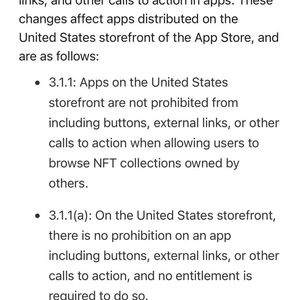From digital identity to outer space: Projects push crypto use cases
3 min read
As the crypto space developed, blockchain use cases expanded from simple digital currencies and non-fungible tokens (NFTs) to more complex areas such as digital identity verification and telecommunications. Ahead of the Token2049 event in Dubai, Cointelegraph spoke with Spacecoin CEO Stuart Gardner, Spacecoin founder Tae Oh, and Humanity Protocol founder Terrence Kwok to explore how they use blockchain to improve certain industries. From addressing challenges like verification in the artificial intelligence era to bringing internet connectivity to developing countries, projects are integrating blockchain to solve problems in different industries. Digital identity verification to combat the AI threat As artificial intelligence developed, the technology brought improvements that people could benefit from. However, the technology was also adopted by malicious actors who used the tech to perform AI-assisted hack research and deepfake scams . Kwok told Cointelegraph that proving that you’re a human seemed like a “crazy” idea about two years ago. However, today’s AI technology has made it very easy to fake being a real human. “As for content, you can’t tell if it’s AI-generated or not. Video deepfakes, you cannot tell, right? Even documents. It’s super easy now to use AI to create a fake proof of address, a fake proof of balance for your bank statement. I think in the future it’s only going to get worse,” he said. The executive also said that in the future, AI may also exist in the physical world through humanoids that might mimic human beings. In 2024, Tesla’s humanoid robot project was showcased on social media , highlighting developments in humanoid robotics. Kwok said that the development of robots underscores the need for human identity verification even more. The executive said that this was why they launched the Humanity Protocol, which uses blockchain tech for digital identity verification. “The internet is filled with bots, you know, it’s filled with AI agents. They’re great, but there’s also a need to be able to verify and check whether something or somebody is a person or not,” Kwok told Cointelegraph. Terrence Kwok (left) and Ezra Reguerra (right) at the Dubai Polo and Equestrian Club. Source: Cointelegraph Related: Global demand grows for non-dollar stablecoins, says Fireblocks exec Decentralized satellite network to combat the connectivity oligopoly Apart from digital identity, blockchain technology is also being used to create a decentralized satellite network. Gardner told Cointelegraph that at the moment, the satellite connectivity landscape is an oligopoly, a market structure where the industry is dominated by only a few large players. The executive pointed out that Starlink and Amazon lead the race, while the EU and China are catching up. However, the big problem is that over 150 countries are lagging behind. “They’re going to become reliant upon working with one of these oligopolies for their connectivity. And that poses a big issue for these people,” Gardner added. On Nov. 1, Spacecoin unveiled a plan to launch a decentralized physical infrastructure network (DePIN) through a fleet of nanosatellites in space. Oh told Cointelegraph that the Spacecoin idea came from the observation that the space industry is getting heavily commoditized. However, the executive said that it was possible for smaller companies or even individuals to launch their own satellites and start building constellations for connectivity. The Spacecoin founder added that since different people or entities own each satellite, it’s essentially a “decentralized network.” The executive said that they integrated crypto into the project to have a “trustless means of payment and data exchange.” Oh said that this was where the blockchain comes in. Gardner (left) and Oh (middle) at the Crypto Polo event in Dubai. Source: Cointelegraph Magazine: Crypto wanted to overthrow banks, now it’s becoming them in stablecoin fight

Source: CoinTelegraph






